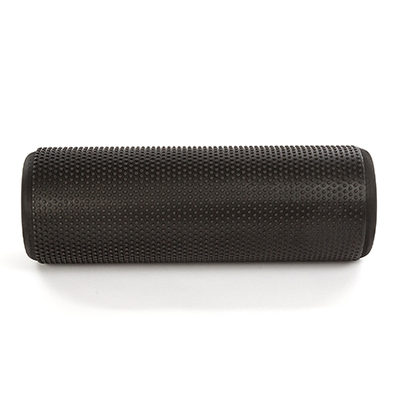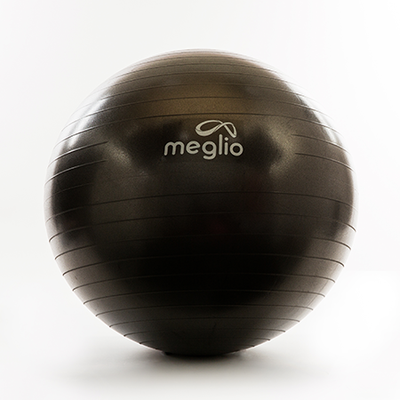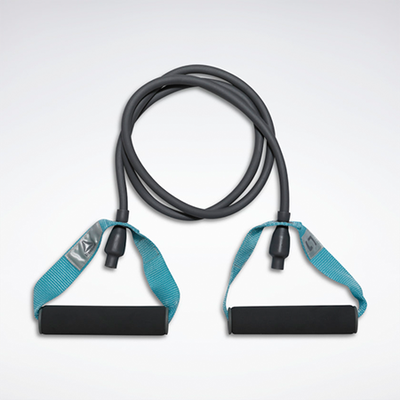
6 Workout Excuses You Need To Stop Making
You’re Sore From Your Last Workout
THE SOLUTION: Soreness indicates your muscles are in repair mode after a tough workout. Studies suggest exercising intensely before they heal can hinder muscle growth and lead to fatigue, swelling and injury, but making a few tweaks to your planned workout can help you train safely. “It’s perfectly natural to feel sore and achy in the days after a tough workout,” explains PT Alex Parren. “In fact, delayed onset muscle soreness (DOMS) can last up to 72 hours. Thankfully, this doesn’t mean you can’t work out for three days. When DOMS happens, remember your muscles are in the process of repairing, so avoid heavy lifting or overly strenuous cardio when you’re feeling sore. Keep your workout light and utilise equipment like resistance bands instead of heavy weights for your resistance training.” Alex also recommends foam rolling to work out any knots that may have formed and to keep muscles flexible and supple.
Meanwhile, Bryony Thompson, 1Rebel trainer, also recommends getting the blood pumping when the DOMS hits in, as well as taking more time with your warm-up. “Getting the muscles warm and moving again followed by a decent stretch or cool down is a key factor to working through DOMS. If you’re feeling particularly sore or heavy, you might benefit from moving but in a less intense way. For example, if you’re sore from a lower body session, do an upper body session the next day. Any form of yoga or low impact cardio also works wonders.”
You Had A Bad Night’s Sleep
THE SOLUTION: If you slept for anywhere between seven to eight hours, you’re good to hit the gym, but if you were tossing and turning all night, it’s time to re-think your workout. The experts say a lack of sleep affects co-ordination, making exercise potentially more dangerous, plus your rate of perceived exertion will also make exercise feel harder than it is. Even if you’re working out at the same intensity as usually do, sleep deprivation can mess with your mental performance, according to research. If you feel a workout will help kick-start flagging energy levels after a bad night’s sleep, Alex says to keep it slow and steady. “Keep your cardio in the low heart rate steady-state zone – this means walking uphill or light jogging only. Try to keep your heart rate below zone 3 (70% of your max). This is still a very effective way to burn fat and improve your cardiovascular endurance and aerobic capacity without pushing your body too hard.” If strength training is your thing, Alex advises caution. “Avoid lifting heavy weights as the lack of sleep can cause reduced concentration, which could lead to an injury or accident. Instead, use resistance bands to feel the burn and focus on slow movements, really making every rep count.”
You’re Feeling Uninspired In The Gym
THE SOLUTION: If you’ve recently got back into the gym after months of home workouts, you may be feeling lost and uninspired when it comes to your training programme. The experts agree mixing it up is the key to overcoming gym-related boredom. “We’re all guilty of getting bored of a training plan,” says Bryony. “Being pushed in a class environment really helps when you’re feeling unmotivated, but sometimes the last thing you want is an instructor shouting at you from a dark room. Try to find something new. Find a new class to try or a new trainer – for example, if you always do HIIT sessions, look for a new Pilates or barre class to try. It may sound simple but keeping your workouts varied is one of the easiest ways to stay motivated, and it also helps to try something new with a friend – sometimes having a friend to be accountable to works wonders.”
Alex also recommends keeping things fresh, saying a CrossFit-style MetCon circuit is the ultimate way to beat the boredom. “This kind of class incorporates weights, cardio, speed, stamina and balance, and there are hundreds if not thousands of variations you can play with.” Alex’s other top tip? Using a piece of gym equipment you’ve never tried before. “How about the TRX or a gym ball? If you’re not sure how to use any piece of equipment, ask a member of staff in your gym or a PT who will always be happy to help.”
You’re Over Your Favourite Running Route
THE SOLUTION: If you’re one of the many that took to the pavements in lockdown but are now struggling to maintain your running motivation, you’re not alone. “It’s hard for some of us to admit,” says Bryony, “But it’s easy to feel uninspired by running very quickly. During lockdown, the best advice was to try out a new route as often as possible – a change of scene is like hitting the refresh button on a technical device. Suddenly your run doesn’t seem like such a chore. Tuning into a guided run can also help – having a coach in your ear will help get you through mentally and physically.” Bryony’s other top tip for keeping running exciting is to shorten your run and incorporate a little HIIT. “Try running for 400m, and then completing 10 push-ups, 10 mountain climbers, 10 walking lunges and 10 jump squats, before repeating the whole circuit five times.”
Alex is a fan of Fartlek, a running term which translates as ‘speed play’ in Swedish. Unlike tempo and interval runs, Fartlek runs alternate between moderate to hard efforts with easy efforts throughout. After a warm-up, play with your speedy by running at faster efforts for short periods of time followed by easy effort running to recover. “The best thing about Fartlek is that you can make it up as you go along – there are no set interval speeds or durations. For example, you could try sprinting as fast as you can to the next lamppost, then walk or jog lightly to the next, then sprint again and repeat until your workout is complete. Sprint intervals will really test your stamina and improve your cardiovascular fitness. Intervals will also keep your body second-guessing, so it has to work harder, meaning you’ll see better results.”
You’re Hungover
THE SOLUTION: While you may be tempted to sweat it out, hold fire, because chances are you’re seriously dehydrated if you’ve been drinking the night before. In fact, studies suggest that for every 1ml of alcohol drunk, urine excretion increases by 8ml, so unless you were having a glass of water for every drink, you’re probably lacking. “If you’re hungover, it’s important to drink plenty of water and keep the intensity of your workout fairly low,” Alex advises. “Keep your heart rate no higher than 70% of your max and stick to steady state cardio, such as a light jog. Don’t do any heavy lifting as your lack of concentration could lead to an injury, and steer clear of high intensity cardio, as the dehydration could exacerbate your hangover symptoms.”
If you feel like death, heading back to bed is probably the best bet, but if your hangover is mild and you need to clear your head, yoga or Pilates could be a good bet. “Exercise is proven to release endorphins and boost your mood, so working out could help you feel better,” says Alex. “Low intensity and low impact workouts like yoga or Pilates could help you feel better as they allow for gentle movement and stretching. The mentally calming effect of these types of training could also help clear your mind after a heavy night.” And if the hangover is hitting home, don’t feel too bad about skipping a session, as science shows muscle development is directly impacted by alcohol, and drinking just two units of alcohol suppresses fat burning by 73% for several hours afterwards.
You Only Have 15 Minutes
THE SOLUTION: No time? No problem. The experts say a short and sweet session can also get you results – the secret lies in knowing how to maximise your minutes. “If you’re short on time but still want results, a high intensity workout is your best bet. Try a Tabata workout to keep you focused as it has a set structure, meaning you’ll know exactly how long it will last,” Alex recommends. “Tabata is a type of interval training where you work for 20 seconds and then rest for 10 seconds, repeated 8 times for a total of four minutes. If you only have 15 minutes to do your workout, three rounds of Tabata will take 12 minutes, leaving a few minutes either side for a quick warm-up and cool-down.” The only caveat with Tabata is you need to put in 100% for maximum results, Alex says, but you can incorporate any number of high intensity exercises for the eight rounds, such as burpees, mountain climbers or jumping squats, meaning you won’t get bored.
Feeling inspired? Supercharge your workout with this expert-approved kit…
*Features published by SheerLuxe are not intended to treat, diagnose, cure or prevent any disease. Always seek the advice of your GP or another qualified healthcare provider for any questions you have regarding a medical condition, and before undertaking any diet, exercise or other health-related programmes.
DISCLAIMER: We endeavour to always credit the correct original source of every image we use. If you think a credit may be incorrect, please contact us at info@sheerluxe.com.





